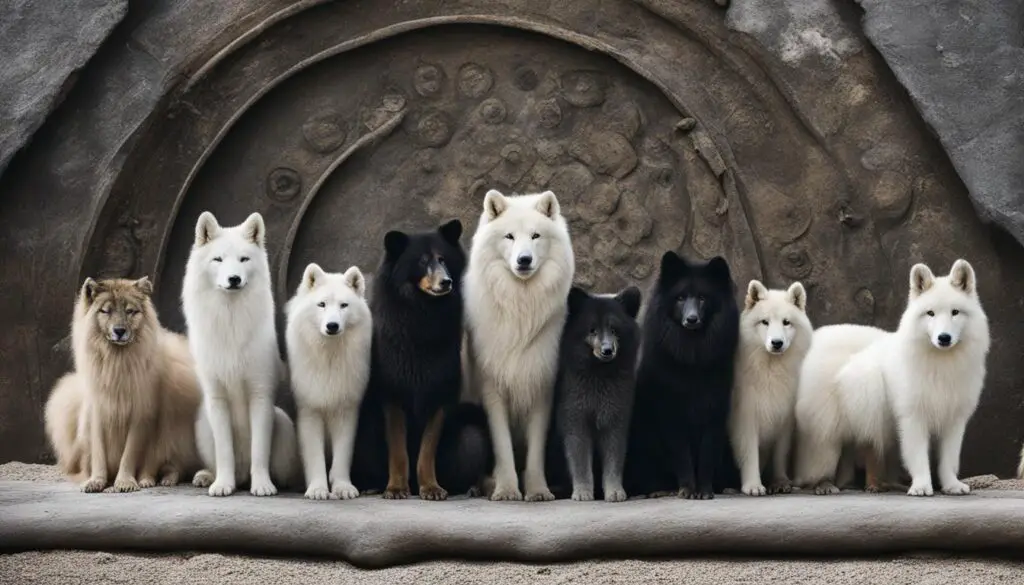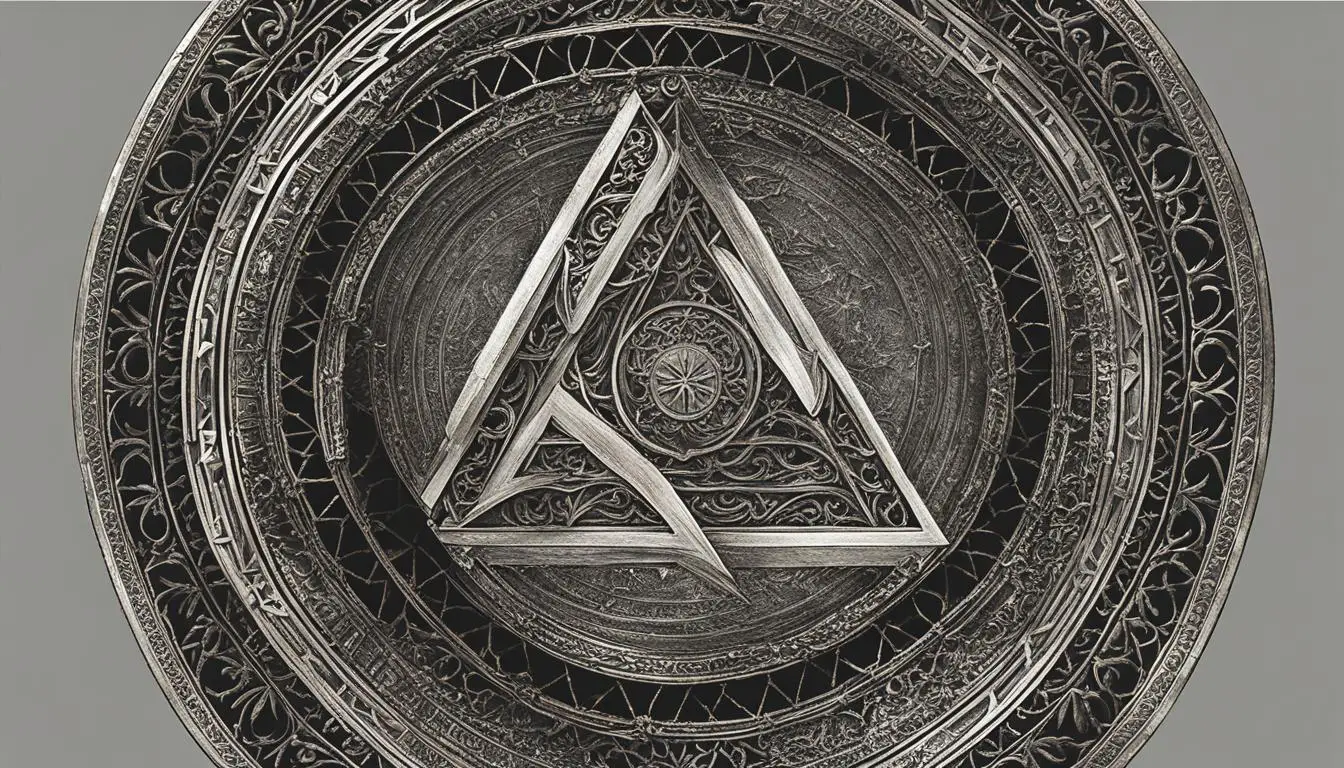Welcome to our exploration of the biblical understanding of clean and unclean animals. In this article, we will delve into the definition of unclean animals as outlined in the Bible, particularly focusing on the Levitical laws. We will uncover the historical and religious context behind these guidelines, examine the significance of unclean animals in the Bible, and explore different opinions and interpretations surrounding this topic. So, let’s embark on this fascinating journey through the scriptures to gain a deeper understanding of clean and unclean animals.
Key Takeaways:
- The Bible provides clear guidelines for distinguishing between clean and unclean animals.
- The classification of animals as clean or unclean goes beyond dietary considerations and carries symbolic and spiritual significance.
- Different religious groups may interpret and apply these guidelines differently.
- The designation of unclean animals in the Bible serves to set apart God’s people and teach about holiness.
- The distinction between clean and unclean animals existed before the formal giving of the Mosaic Law.
The Significance of Unclean Animals in the Bible
The classification of animals as clean or unclean in the Bible holds great significance and serves multiple purposes. From a biblical perspective, the designation of animals as clean or unclean goes beyond mere dietary guidelines. It is rooted in the Old Testament view on unclean animals and carries spiritual and symbolic meaning.
Being classified as unclean meant that an animal was considered impure and unfit for worship at the temple. On the contrary, clean animals were regarded as suitable for sacrifices and consumption. This distinction between clean and unclean animals was a way for God to set apart His chosen people, Israel, and remind them of their special relationship with Him.
The Old Testament provides clear guidelines for determining whether an animal is clean or unclean. Leviticus 11 outlines the characteristics that differentiate clean land animals, clean seafood, and clean birds from their unclean counterparts. These guidelines include specific criteria such as divided hooves, chewing the cud, fins and scales, and certain bird species. The biblical perspective on unclean animals emphasizes the importance of worshiping the one true God in a manner that reflects holiness and obedience.
The Biblical Perspective on Clean and Unclean Animals:
“For I am the Lord your God. Consecrate yourselves therefore, and be holy, for I am holy. You shall not defile yourselves with any swarming thing that crawls on the ground. For I am the Lord who brought you up out of the land of Egypt to be your God. You shall therefore be holy, for I am holy.” (Leviticus 11:44-45)
In conclusion, understanding the significance of unclean animals in the Bible requires delving into the biblical perspective on clean and unclean animals. It goes beyond dietary considerations and encompasses spiritual, symbolic, and cultural aspects. The Old Testament view on unclean animals reminds believers of the importance of living a life of holiness and obedience, set apart for God’s purposes.
Religious Interpretation of Unclean Animals in the Bible
In the biblical teachings on clean and unclean animals, the scriptural definition of unclean animals holds significant religious interpretation. These guidelines, outlined primarily in Leviticus 11 and Deuteronomy 14, served as a way for God to set apart His people and teach them about holiness. The distinction between clean and unclean animals goes beyond mere dietary considerations and carries symbolic and spiritual significance.
The Levitical laws on clean and unclean animals were part of a larger framework of laws given by God to the Israelites, guiding their worship and daily lives. The priests of the Levitical order were responsible for teaching the people these distinctions, emphasizing obedience to God’s laws. By adhering to these regulations, the Israelites were made holy and set apart for God.
The classification of animals as clean or unclean in the Bible was not solely based on dietary restrictions, but also had practical health benefits. Following the dietary guidelines and consuming primarily clean animals would have protected against many health problems in ancient times.
These religious teachings on clean and unclean animals highlight the importance of living a distinct and holy life. The categorization of animals served as a visible reminder of the Israelites’ special relationship with God and their commitment to worshiping Him alone. While the practical applications of these guidelines may have evolved over time, the underlying principles of worship, obedience, and holiness remain relevant to religious interpretation today.
| Biblical Verses | Significance |
|---|---|
| Leviticus 11 | Provides a detailed list of clean and unclean animals, birds, and sea creatures. |
| Deuteronomy 14 | Reinforces the guidelines and adds additional details to the classification of clean and unclean animals. |
The Biblical Verses on Clean and Unclean Animals
The primary biblical passages that discuss clean and unclean animals are found in Leviticus 11 and Deuteronomy 14. These verses provide detailed instructions on the characteristics that determine whether an animal is considered clean or unclean. Understanding these passages is essential in comprehending the scriptural teachings on clean and unclean animals.
In Leviticus 11, a comprehensive list is provided, outlining the specific criteria for land animals, birds, and sea creatures. For land animals, they must have divided hooves and chew the cud to be considered clean. Regarding birds, clean species include chickens, doves, and ducks, while unclean birds are those of prey or scavengers. And when it comes to seafood, clean species are those with both fins and scales.
Deuteronomy 14 reinforces the guidelines established in Leviticus 11 and adds some additional details. It emphasizes the distinction between clean and unclean animals and provides further insight into their significance within the context of worship and obedience to God’s commands.
| Bible Verses | Description |
|---|---|
| Leviticus 11 | Provides a comprehensive list of clean and unclean animals, detailing the specific characteristics that determine their classification. |
| Deuteronomy 14 | Reinforces the guidelines established in Leviticus 11 and provides additional insight into the significance of clean and unclean animals. |
These passages serve as the foundation for understanding the biblical perspective on clean and unclean animals. They highlight the importance of obedience to God’s commands and the role that these dietary guidelines play in the worship and holiness of God’s people.
The Historical Background of Clean and Unclean Animals
The categorization of animals as clean or unclean goes back to the time of Noah. Before the Flood, God instructed Noah to take seven pairs of every clean animal and one pair of every unclean animal onto the ark. This indicates that Noah already had knowledge of which animals were considered clean and suitable for sacrifice. After the Flood, Noah immediately made sacrifices to God using some of the clean animals he had taken aboard. The distinction between clean and unclean animals existed before the formal giving of the Mosaic Law.
The historical background of clean and unclean animals reveals that their significance predates the establishment of specific dietary guidelines in the Bible. It suggests that the concept of clean and unclean animals was ingrained in the early worship practices of humanity. This understanding can help contextualize the importance of clean animals in religious ceremonies and sacrifices, as well as the symbolic meaning attached to the distinction between clean and unclean.
“And Noah built an altar to the LORD, and took of every clean animal and of every clean bird, and offered burnt offerings on the altar.” – Genesis 8:20
The historical background of clean and unclean animals sheds light on the foundation of these biblical teachings. It highlights the continuity of this distinction throughout different periods of human history, showcasing its enduring relevance and spiritual significance. Understanding the historical context allows us to appreciate the rich tapestry of beliefs and practices surrounding clean and unclean animals and their role in ancient religious traditions.
| Hebrew | Greek |
|---|---|
| tahor (טָהוֹר) | katharos (καθαρός) |
| tame (טָמֵא) | akathartos (ἀκάθαρτος) |
What Scholars Say About Clean and Unclean Animals
Scholars have provided various perspectives on the dietary guidelines for clean and unclean animals in the Bible. These interpretations shed light on the historical, cultural, and religious significance of these guidelines. While opinions may differ, scholars offer valuable insights into the topic.
Some scholars view the distinction between clean and unclean animals as purely religious, considering it as part of the wider framework of Jewish laws and practices. They emphasize that these guidelines were specific to the Israelites and not necessarily applicable to all cultures and time periods.
Others propose that the inclusion of certain animals in the unclean category may have been due to health concerns. Animals designated as unclean often consume carrion or live in unsanitary environments, potentially posing health risks to those who consume them. These scholars highlight the practical aspect of the dietary guidelines.
“The clean and unclean animals in the Bible serve as symbols of distinction and holiness, indicating God’s desire for His people to live a distinct and holy life” – Dr. Rebecca Lawson, Biblical Studies Professor
Moreover, some scholars argue that the guidelines for clean and unclean animals were part of God’s communication with His people, emphasizing the importance of living a distinct and holy life. These guidelines symbolize the separation of the Israelites from other nations and religions, reinforcing their special relationship with God.
Overall, the insights provided by scholars contribute to a deeper understanding of the significance of clean and unclean animals in the Bible. They highlight the religious, cultural, and practical aspects of these dietary guidelines, allowing us to appreciate the multifaceted nature of this topic.

Bible Stories About Clean and Unclean Animals
Clean and unclean animals are intricately woven into various Bible stories, highlighting their significance in the religious and cultural context. These stories provide insights into the importance of distinguishing between clean and unclean animals, and how this distinction impacted the lives of God’s people. Let’s explore a few notable examples:
The Story of Noah’s Ark
One of the most well-known biblical stories, the account of Noah’s Ark prominently features the categorization of animals as clean and unclean. As commanded by God, Noah took one pair of every unclean animal and seven pairs of every clean animal onto the ark. This distinction played a crucial role in preserving the sanctity and purity of the animal kingdom during the great flood. The story emphasizes the importance of adhering to God’s instructions and recognizing the significance of clean animals in fulfilling His purposes.
The Exodus and the Passover
In the story of the Israelites’ exodus from Egypt, the consumption of the Passover lamb stands as a powerful illustration of the significance of clean animals in religious observances. The Israelites were instructed to sacrifice and consume a lamb without blemish, symbolizing the purity and holiness required in their worship of God. This practice reinforced the distinction between clean and unclean animals and highlighted their role in demonstrating obedience and faithfulness to God’s commands.
David and Goliath
The story of David and Goliath showcases the connection between clean and unclean animals and the spiritual strength of God’s people. Before facing the giant Philistine, David draws upon his experiences as a shepherd, protecting his flock from wild beasts. This connection highlights the importance of purity, courage, and reliance on God’s strength in overcoming seemingly insurmountable challenges. David’s faithfulness in tending to and protecting his father’s sheep reflects the significance of clean animals in his life, symbolizing his commitment to living a righteous and obedient life.
These Bible stories demonstrate the integral role of clean and unclean animals in the lives of God’s people. They serve as reminders of the importance of obedience, purity, and holiness in worship and daily living. The distinction between clean and unclean animals carries spiritual and symbolic significance, inviting readers to reflect on their own lives and the role of purity in their relationship with God.
https://www.youtube.com/watch?v=gJAcBL4jmco
| Bible Story | Key Message |
|---|---|
| The Story of Noah’s Ark | The importance of preserving the sanctity of clean animals during the great flood. |
| The Exodus and the Passover | The significance of clean animals in religious observances and obedience to God’s commands. |
| David and Goliath | The connection between clean animals and spiritual strength in overcoming challenges. |
Understanding Right and Wrong in the Context of Clean and Unclean Animals
The classification of animals as clean or unclean in the Bible provides a framework for understanding right and wrong in the context of food consumption. It is important to note that this classification goes beyond dietary considerations and carries symbolic and spiritual significance. God’s designation of certain animals as unclean and unfit for consumption implies that indulging in such foods would be considered morally wrong.
The biblical perspective on clean and unclean animals teaches us about the importance of obedience to God’s commands and the pursuit of holiness. By categorizing animals as clean or unclean, God set His people apart and reminded them of their special relationship with Him. The dietary guidelines served as a tangible way for the Israelites to demonstrate their commitment to worshiping the one true God and living according to His principles.
However, it is worth noting that in the New Testament, the teachings regarding clean and unclean animals undergo a shift. Jesus Christ’s sacrifice on the cross brought about a new covenant, where believers are no longer judged based on what they eat. This transition reflects a broader theological understanding that places more emphasis on the condition of one’s heart and faith in Christ rather than adherence to specific dietary regulations.

“Do not destroy the work of God for the sake of food. All food is clean, but it is wrong for a person to eat anything that causes someone else to stumble.” – Romans 14:20
In summary, the biblical perspective on clean and unclean animals serves as a guide for discerning right from wrong in the context of food consumption. While the dietary guidelines in the Old Testament emphasized obedience and worship, the New Testament highlights the importance of love, compassion, and consideration for others. Ultimately, the understanding of right and wrong extends beyond what we eat and encompasses our actions, attitudes, and relationships.
Clean and Unclean Animals in Today’s World
In modern times, the distinction between clean and unclean animals outlined in the Bible is not strictly followed by all religious groups. Different interpretations and applications of these dietary guidelines exist among various religious denominations and individuals. While some religious groups continue to strictly adhere to the biblical guidelines, considering the consumption of unclean animals as sinful or forbidden, others view these guidelines as historically and culturally specific, no longer applicable in the present time.
For the majority of people in today’s world, the guidelines for clean and unclean animals outlined in the Bible do not hold the same practical or religious significance they once did. However, it’s important to note that certain dietary restrictions based on religious beliefs still persist. For example, both kosher and halal diets adhere to specific guidelines regarding the consumption of certain animals and the preparation of food.
The varying perspectives on clean and unclean animals can also be influenced by personal convictions and health reasons. Some individuals may choose to follow these guidelines for ethical or health-related concerns. However, it is essential to approach this topic with respect and understanding, recognizing that interpretations and practices can differ among different individuals and communities.
Overall, while the guidelines for clean and unclean animals in the Bible continue to be studied and debated, their practical and religious significance in today’s world varies based on individual beliefs and cultural contexts.

Table: Comparison of Views on Clean and Unclean Animals
| Viewpoint | Description |
|---|---|
| Strict Adherence | Some religious groups consider the guidelines for clean and unclean animals as binding and continue to follow them closely. |
| Historical and Cultural Specificity | Others view the guidelines as specific to the historical and cultural context of the biblical era, no longer applicable in modern times. |
| Personal Convictions and Health Reasons | Individuals may choose to follow these guidelines based on personal convictions, ethical concerns, or health-related reasons. |
| Religious Dietary Restrictions | Religious diets such as kosher and halal adhere to specific guidelines regarding the consumption and preparation of food. |
Different Opinions on Clean and Unclean Animals
When it comes to the dietary guidelines for clean and unclean animals outlined in the Bible, there are a variety of opinions and interpretations among different individuals and communities. Some religious groups strictly adhere to these guidelines and consider the consumption of unclean animals as sinful or forbidden. They view the distinction between clean and unclean animals as an important aspect of their faith and a way to honor God’s commands.
On the other hand, there are those who see these guidelines as historically and culturally specific, and not necessarily applicable to the present time. They believe that the dietary restrictions for clean and unclean animals were specific to the Old Testament era and the covenant between God and the Israelites. These individuals may choose to follow different dietary guidelines based on their own personal convictions or health reasons.
Additionally, scholars have offered various perspectives on the significance of clean and unclean animals in the Bible. Some scholars view these guidelines as purely religious and symbolic, serving as a reminder of God’s desire for His people to live distinct and holy lives. Others suggest that the inclusion of certain animals in the unclean category may have been due to health concerns, as these animals may have posed a greater risk of diseases or contamination.
| Perspective | Explanation/Quote |
|---|---|
| Religious Adherence | “We believe in following the dietary guidelines outlined in the Bible as a way to honor God’s commands and live in obedience.” |
| Historical/Cultural Specificity | “The dietary restrictions for clean and unclean animals were specific to the Old Testament era and may not be applicable today.” |
| Scholarly Interpretation | “The distinction between clean and unclean animals serves religious and symbolic purposes, as well as potentially addressing health concerns.” |
In conclusion, the interpretation and application of the guidelines for clean and unclean animals can vary among different individuals and communities. Some adhere strictly to these guidelines as part of their religious practices, while others see them as historically and culturally specific. Scholars offer various perspectives, highlighting the symbolic and potentially health-related aspects of these guidelines. Ultimately, the understanding and practice of clean and unclean animals remain a matter of personal belief and interpretation.
Exploring the Etymology of Clean and Unclean Animals
The terms “clean” and “unclean” used to describe animals in the Bible have specific meanings in the original Hebrew and Greek languages. The Hebrew word for “clean” is “tahor,” which conveys the idea of purity and being ceremonially fit for worship. On the other hand, the Hebrew word for “unclean” is “tame,” which indicates impurity and being unfit for worship. Similarly, in Greek, the word for “clean” is “katharos,” meaning pure or clean, while the word for “unclean” is “akathartos,” which denotes impurity or being unclean.
The etymology of these terms sheds light on the intended meaning of the classification of animals in the Bible. The categorization of animals as clean or unclean was not merely about dietary guidelines but carried deep symbolic and spiritual significance. It was a way for God to communicate His desire for His people to live distinct and holy lives, separated from anything impure or unclean.
Understanding the etymology of “clean” and “unclean” helps us grasp the underlying message behind the biblical classification of animals. It emphasizes the importance of purity, both in a physical and spiritual sense, and reveals God’s intention to set apart a people who are devoted to Him.

The Hebrew and Greek Words for Clean and Unclean Animals
| Language | Clean | Unclean |
|---|---|---|
| Hebrew | tahor | tame |
| Greek | katharos | akathartos |
“The etymology of ‘clean’ and ‘unclean’ reveals the deeper spiritual meaning behind these classifications. It highlights the concept of purity and separation from anything impure or unfit for worship.”
The classification of animals as clean or unclean, as understood through their etymology, serves as a reminder of God’s desire for His people to lead holy and distinct lives. It communicates the importance of purity, not only in a physical sense but also in a spiritual context. By following these guidelines, individuals were reminded of their special relationship with God and their commitment to worshipping Him alone.
Conclusion
The biblical understanding of clean and unclean animals is rooted in the historical and religious context of the Old Testament. These guidelines, outlined in Leviticus 11 and Deuteronomy 14, serve as a way for God to set apart His people and teach them about holiness. The distinction between clean and unclean animals goes beyond mere dietary considerations and carries symbolic and spiritual significance.
By designating certain animals as unclean, God established a framework for understanding right and wrong in the context of food consumption. Indulging in unclean animals would be considered morally wrong under the biblical perspective. However, it is important to note that in the New Testament, believers are no longer judged based on what they eat, as the transition from the Old Covenant to the New Covenant through Jesus Christ brought a shift in perspective.
In today’s world, the biblical guidelines for clean and unclean animals do not have the same practical or religious significance they once had. Different religious denominations and individuals may interpret and apply these guidelines differently. While some strictly adhere to these guidelines, others view them as historically and culturally specific. Ultimately, the interpretation and application of these guidelines can vary among different individuals and communities.
Regardless of differing opinions, the underlying principles of worship, obedience, and holiness remain key elements to consider in understanding the Bible’s definition of unclean animals. The distinction between clean and unclean animals serves as a reminder of the special relationship between God and His people, even in today’s ever-evolving world.
FAQ
What are clean and unclean animals in the Bible?
Clean animals are those that are considered suitable for sacrifice and consumption, while unclean animals are considered unfit for worship and consumption. The distinction between clean and unclean animals goes beyond dietary guidelines and is also related to worshipping the one true God.
Where can I find the biblical guidelines for clean and unclean animals?
The primary passages that discuss clean and unclean animals are found in Leviticus 11 and Deuteronomy 14. Leviticus 11 provides a detailed list of clean and unclean land animals, birds, and sea creatures, while Deuteronomy 14 reinforces the guidelines and adds some additional details.
Why did God designate certain animals as clean and others as unclean?
The designation of clean and unclean animals served to separate what was considered clean and pure from what was unclean. It was a way for God to set His people, Israel, apart and remind them of their special relationship with Him. Clean animals were intended for sacrifices and consumption, while unclean animals were considered unfit for worship at the temple.
What is the significance of clean and unclean animals in the Bible?
The classification of animals as clean or unclean in the Bible served multiple purposes. It set God’s people apart from other nations and religions, reinforcing their special relationship with Him. The distinction between clean and unclean animals also carried symbolic and spiritual significance, highlighting the principles of worship, obedience, and holiness.
Are the dietary guidelines for clean and unclean animals still followed today?
The strict adherence to the dietary guidelines for clean and unclean animals outlined in the Bible varies among different religious groups. Some still follow these guidelines, while others view them as historically and culturally specific. For the majority of people in today’s world, the guidelines for clean and unclean animals do not have the same practical or religious significance they once had.
What do scholars say about the dietary guidelines for clean and unclean animals?
Scholars have analyzed the dietary guidelines from various perspectives. Some view them as purely religious, while others suggest that certain animals were categorized as unclean due to health concerns. The scholarly opinions on the dietary guidelines for clean and unclean animals can vary.
How do clean and unclean animals feature in Bible stories?
Clean and unclean animals play a significant role in various Bible stories. For example, in the story of Noah’s Ark, the distinction between clean and unclean animals is evident in the instructions given to Noah regarding which animals to bring on board. The consumption of the Passover lamb in the story of the Israelites’ exodus from Egypt highlights the importance of sacrificing and consuming clean animals for religious observances.
What is the biblical perspective on clean and unclean animals in terms of right and wrong?
The classification of animals as clean or unclean in the Bible provides a framework for understanding right and wrong in the context of food consumption. God’s designation of certain animals as unclean implies that indulging in such foods would be considered morally wrong. However, the New Testament teaches that believers are no longer judged based on what they eat, reflecting the transition from the Old Covenant to the New Covenant through Jesus Christ.
Does the distinction between clean and unclean animals have any practical significance today?
While the guidelines for clean and unclean animals outlined in the Bible may not have the same practical significance in modern times, some religious groups still adhere to dietary restrictions based on their beliefs, such as kosher and halal diets. Individual dietary choices may also be influenced by personal convictions or health reasons.
Are there different opinions on the classification of clean and unclean animals?
Yes, there are a variety of opinions and interpretations regarding the dietary guidelines for clean and unclean animals. Some religious groups strictly adhere to these guidelines, while others view them as historically and culturally specific. The interpretation and application of the guidelines can vary among different individuals and communities.
What is the etymology of the terms “clean” and “unclean” used in the Bible?
In the original Hebrew and Greek languages, the word for “clean” conveys the idea of purity and being ceremonially fit for worship, while the word for “unclean” indicates impurity and being unfit for worship. Understanding the etymology of these terms provides insight into the intended meaning of the classification of animals in the Bible.
Source Links
- https://www.gotquestions.org/animals-clean-unclean.html
- https://lifehopeandtruth.com/bible/biblical-laws/clean-and-unclean-animals/
- https://www.ucg.org/bible-study-tools/booklets/what-does-the-bible-teach-about-clean-and-unclean-meats/infographic-which-animals-does-the-bible-designate-as-clean-and-unclean







